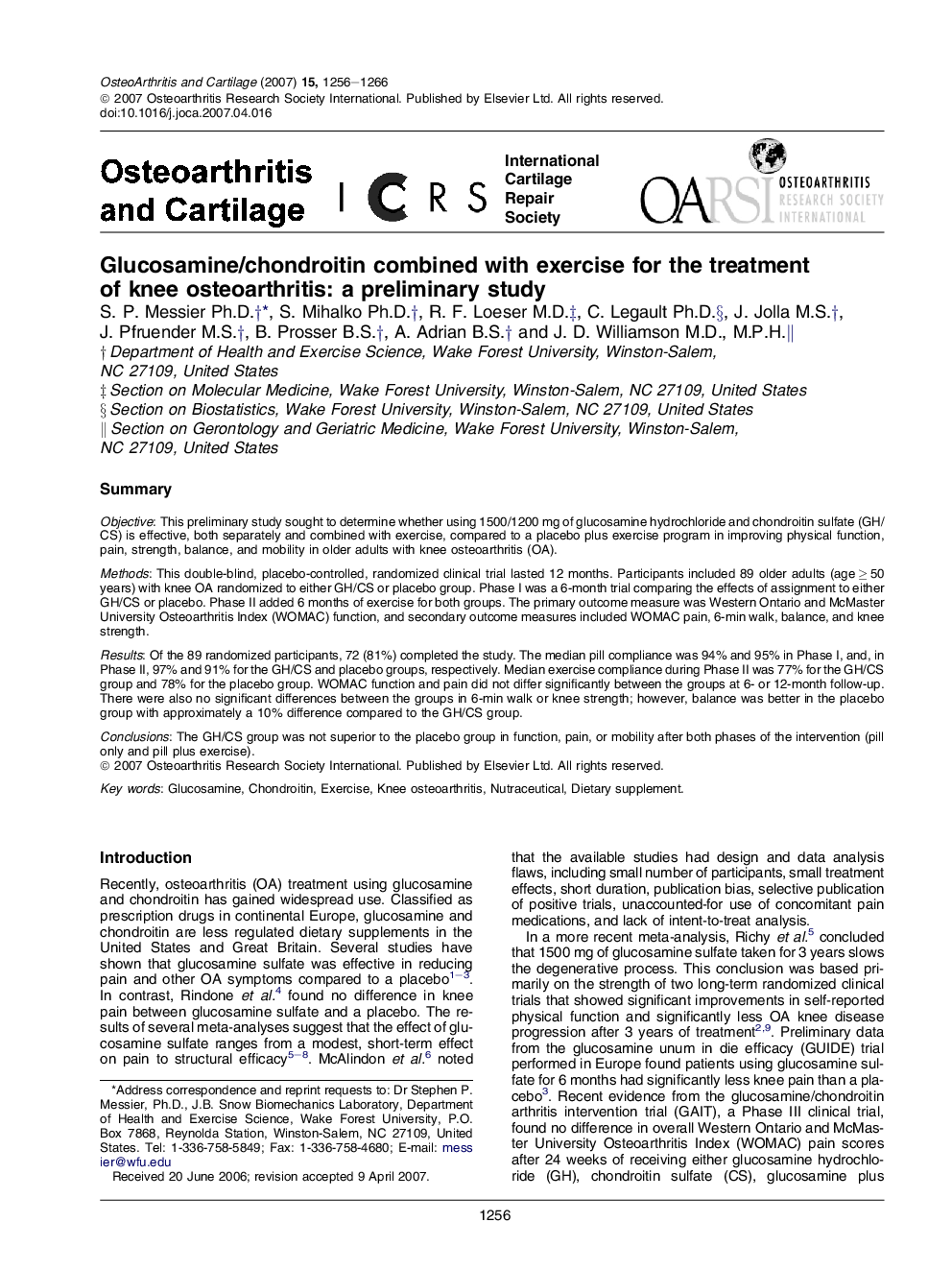| Article ID | Journal | Published Year | Pages | File Type |
|---|---|---|---|---|
| 3381240 | Osteoarthritis and Cartilage | 2007 | 11 Pages |
SummaryObjectiveThis preliminary study sought to determine whether using 1500/1200 mg of glucosamine hydrochloride and chondroitin sulfate (GH/CS) is effective, both separately and combined with exercise, compared to a placebo plus exercise program in improving physical function, pain, strength, balance, and mobility in older adults with knee osteoarthritis (OA).MethodsThis double-blind, placebo-controlled, randomized clinical trial lasted 12 months. Participants included 89 older adults (age ≥ 50 years) with knee OA randomized to either GH/CS or placebo group. Phase I was a 6-month trial comparing the effects of assignment to either GH/CS or placebo. Phase II added 6 months of exercise for both groups. The primary outcome measure was Western Ontario and McMaster University Osteoarthritis Index (WOMAC) function, and secondary outcome measures included WOMAC pain, 6-min walk, balance, and knee strength.ResultsOf the 89 randomized participants, 72 (81%) completed the study. The median pill compliance was 94% and 95% in Phase I, and, in Phase II, 97% and 91% for the GH/CS and placebo groups, respectively. Median exercise compliance during Phase II was 77% for the GH/CS group and 78% for the placebo group. WOMAC function and pain did not differ significantly between the groups at 6- or 12-month follow-up. There were also no significant differences between the groups in 6-min walk or knee strength; however, balance was better in the placebo group with approximately a 10% difference compared to the GH/CS group.ConclusionsThe GH/CS group was not superior to the placebo group in function, pain, or mobility after both phases of the intervention (pill only and pill plus exercise).
